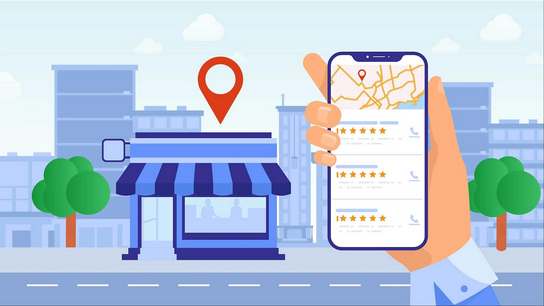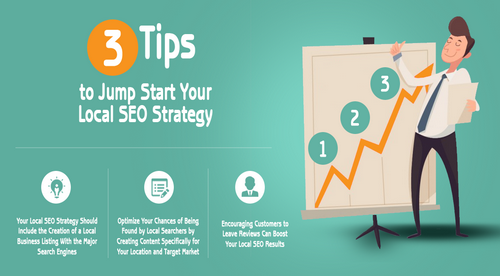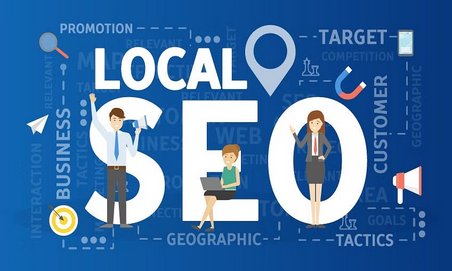
SEO Terminology

SEO Glossary of Different SEO Related Terms
Search engine optimization might seem strange if it is a new concept to you. You’ll likely have to learn basic SEO terms if you’re thinking of hiring a digital marketing agency to help you optimize your site, so you’ll know the in’s and out’s of what your site is doing.
For a website to receive more traffic, it takes more than reading a blog post. SEO (search engine optimization) and its components require clear understanding, which can be difficult. The following terms will help those new to SEO become familiar with the topic.
Keywords
Although keywords may seem simple, they are essential for SEO. Those words or phrases found on a website that enable it to be found are called keywords.
The keywords for this blog, for example, could be something like “SEO Terms.” Notice how these are not creative titles yet are extremely precise and explain the page’s content exactly. Unspecific keywords or those that produce too many results are ineffective. It is possible to determine what keywords to use with resources like Google Keyword Planner.
Keyword Density
A website’s keyword density indicates how often a keyword appears compared to how many words are on a page. Previously, this method was easy for pages to rank higher but has become obsolete due to changes in search engine algorithms.
On the other hand, we can use the same keyword density-measuring strategies to ensure we do not overuse the exact keywords.
Long-Tail Keywords
It’s just a larger version of a keyword. In general, they include three to four standard search terms. It would be better to use the more extended version of the keyword rather than a short keyword. This will allow you to target users who find short keywords overwhelming directly.
SERPS
SERPs is the results page for searches that are shown by search engines. Plug-ins for browsers allow you to analyze a lot of data on a SERP, including keyword usage, title attributes, Meta descriptions, and other SEO metrics.
Bots or Crawlers
The bot is an automated program that indexes, collects, and analyzes website information faster than a human can. The amount of bot traffic online is estimated to be around 60%. Using bots, we can gather information quickly and analyze our own and other websites. Using bots also allows online community members to see updated content immediately.
On-Page SEO
SEO on-page (also known as “On-Site SEO”) involves optimizing a web page to make its content more search engine friendly. Optimization of title tags, content, internal links, and URLs are among the most common on-page SEO practices.
Off-Page SEO
Known also as off-site search engine optimization (“OPSE”), this technique can impact your rankings in search engine results pages (SERPS). These actions include several of the factors of basic search engine optimization that assist in ranking a site.
Headings
Headings are another HTML tag that can be used to optimize content for search engines. It is recommended that the lower number tags are the most important, ranging from H1 to H6. An entire page should only contain one H1 tag and the rest of the tags to structure it.
Fresh Content
Websites are continuously updated (weekly or monthly) with new content, including blogs, resource centres, and updated metadata. This tactic will help in improving SEO.
Outbound Links
Linking out to other websites through outbound links is not inherently meaningful, but you might be able to increase your search rank by linking from sites of higher authority. Connecting to your website can make some search engines calculate your rank according to outbound links. In this way, both parties would benefit.
Inbound Links
Those links pointing to your website from another website are known as inbound links. An inbound link demonstrates where your website is linked across the Internet and is more critical than an outbound link.
Breadcrumb Navigation
In search engine and user navigation, breadcrumb navigation refers to informing search engines and users about how pages are related. This identifies your position on a website and what is related to your current carrier.
Analytics
A system for analyzing and computing data. Analyzing website traffic, users, revenue, traffic sources, user behaviour patterns, and revenue sources are crucial for measuring SEO. Analytical data can be collected and reported using Google Analytics.
Title Tag
HTML tag titles play a vital role in SEO, as well as being HTML elements. In search results pages and on browser pages, they help companies describe precisely what their website contains. Users and search engines can more easily gauge what content each page contains by optimizing its title tags. This facilitates linking and ranking the pages and enables easy user navigation.
SEM
SEM is a type of digital marketing, also known as search engine marketing and search engine advertising, which increases the visibility of a website or webpage through organic and paid advertising.
301 Redirect
Websites use 301 redirects to communicate to search engines that a page is permanently located somewhere else on the page. We can use this redirect to pass on link authority or increase the current page’s rankings. Furthermore, 301 redirects could take anywhere from a day to a month to be detected by search engines.
Canonical URL
Content of one page may appear at other locations on the website through URL. Consequently, the same website can have duplicate content. As a rule, the canonical URL is the version with the most authority. A canonical URL must be used when creating links and optimizing websites for SEO.
Page Authority
Another measure of PA is its authority. It is also based on a hundred-point scale. Instead of ranking the rank of an entire domain in search engine results, this metric ranks an individual page each time a search is done. Each page on a website should be SEO optimized due to the inherent relationship between page rank and domain rank.
ECommerce SEO
The process of increasing rankings for eCommerce brands, categories, and product pages through a search engine optimization campaign. Product SKU or product name keywords are often at the heart of eCommerce SEO campaigns.
Domain Trust
Links from other websites that are trusted measure the domain trust of a website. A website with a “. Edu” or “. go” ending falls into this category. Your website will be more trustworthy by the search engines if it has links from these pages.
Anchor Text
The SEO industry describes the hyperlinked text as anchor text since it’s linked to the anchor text. The popularity of the anchor text is due to SEO’s finding that through keyword-rich anchor text, search engine rankings could be improved.
Optimizing anchor text for articles with wider distribution could be considered a link scheme even when it is equally acceptable to optimize internally (so long as it is relevant and not excessive). Any article or press release should use natural anchor text.
Alt Attribute Text (or Alt Text)
When you search for an item, you may have noticed that an advertisement with a picture of the object appears? You have likely seen how alt text is used. Text that is placed on top of an image that indicates what it contains is alt text.
It is hidden in the backend of the website where the image is displayed, so you cannot see the alt text when you view a photo. By adding alt text to your pictures, you will rank higher in search engines because your website will be found during a search.
Sitemap
Search engines, crawlers, and website visitors can easily access the pages on a website. Website sitemaps are typically formatted as XML files and are organized in hierarchical order. New or updated web pages can be indexed easily through sitemaps.
Usability
A user-centred design approach to SEO is known as usability. To improve the user experience, design, development, and SEO are all created based on how users interact with the website.
Domain Rating (DR):
The domain rating, or DR, is a measurement of the strength of a website’s backlink profile compared to the other sites in its index. Domain rating does play an essential role in website ranking.
The amount of quality websites linking to your website also affects the DR. The domain rating of the linking domains also keeps the domain rating reliable.
UR (URL rating)
The UR or URL Rating of a desired page backline profile is measured on a proportional scale of 0 to 100. In URL Rating, both internal and external links are considered while calculating it.
DA (Domain Authority)
Domain authority is a 1 to 100 rating scale system developed by an SEO company called Moz to help predict how well a given website will rank in the Google search results. The higher the domain range of a website, the higher it’s ranking in the search engine domain. By improving the domain authority, you are improving your search engine ranking.
Page Authority (PA)
Page authority is a matrix that predicts the ability of a specific page to rank in search engines. Page authority plays a vital part in the ranking of any domain. To improve your PA, you need to improve the quality of your content. Also, add external links from high-quality sites.
Ahrefs
Ahrefs is a platform that shows you exactly why your competitors are ranking so high and what you are required to outrank them. Ahrefs will also show you all the keywords that are bringing traffic to your competitors to improve your keyword selection. This platform helps you rank higher and brings traffic to your website.
SEMRush
SEMRush is a SAS service that provides consumers with ideas and data to boost their online presence. This website has a tonne of SEO tools that can help you increase your page’s traffic. It also allows you to find out the topics that people are interested in, and thus you can create content on these topics to increase your views.
MajesticSEO
Majestic SEO is a web-based software tool that provides backlinks. This tool’s backlink data is not available on any other device on the market. Majestic SEO is not related to any SEO measurement platform.
It is a tool that only specializes in backlinks. Majestic SEO performs a backlink check for both your and competitor websites. Then it matches the data achieved from this procedure with the extensive backlink index it has.
MOZ
Moz is an SEO-focused company that runs a website that helps you diagnose potential problems with your website’s SEO. It also serves as a keyword research tool. Not only keywords, but Moz also helps you with any issue related to SEO.
Tag description
The description tag is an HTML element that describes and summarises the page’s content for the users. Description tags are at the top of the page.
Creating links
The practice of obtaining other websites to connect to a page on your website is known as link building.
Search engines like Google use backlinks which help rank web pages. You can create, buy or earn backlinks. Having link building on your page will help you get more traffic.
Internal linking
Internal links are simple connections between one page on the same website to the other. They are essential for three reasons. First, it helps search engines like Google discover new pages to be added to their index.
Secondly, internal links help to pass juice around your site, effectively powering other pages. And lastly, internal links help search engines to understand better what the page is about.
Search Engines
A search engine is an online system that searches the Internet for websites depending on the users’ search terms. It utilizes different search algorithms to determine the results in their database, organize them, and create an orderly arrangement of these results.
Guest Posting
A guest is an article that is written and published on someone else’s blog. Through guest posting, you can increase your brand awareness among many people. Also, another advantage of guest posting is that it allows you to get backlinks to your websites, which further helps in SEO ranking.
Blogger outreach Service
The Blogger outreach service is a great way to build authority and increase your ranking. The Blogger outreach service is designed to obtain links and mentions for your website from bloggers.
The goal of blogger outreach is to secure these mentions as editorial links within the context of an unbiased, non-promotional blog post-placement. Search engines use these mentions and links as signals of authority, which will help a website rank within the search engines.


Leave a reply